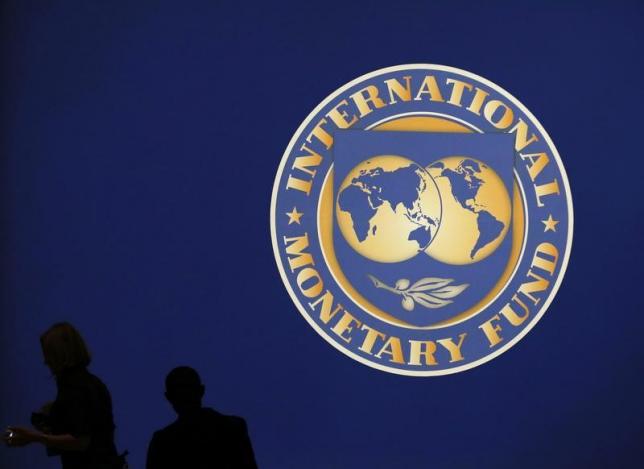
Global growth prospects are uneven across the main countries and regions, says the IMF’s latest WEO. In advanced economies, growth is projected to be stronger in 2015 relative to 2014, but in emerging market and developing economies, it is expected to be weaker.
“Global growth in 2015 is going to be more or less the same as in 2014, about 3.5%. That’s not bad, but that’s not great. It’s clear that advanced economies are going to do better. That’s why our forecast for this year is for 2.4% as opposed to 1.8% last year: a fairly substantial increase. For emerging market economies, it goes the other way which is 4.6% last year, but 4.3% this year. So advanced economies are doing better, emerging market and developing economies are doing a bit worse, not terrible, but a bit worse. The sum is more or less no change at the global level,” IMF Chief Economist Olivier Blanchard said.
In terms of headline numbers, global growth is forecast to rise moderately in 2015–16, from 3.4 percent in 2014 to 3.5 percent in 2015 and 3.8 percent in 2016, broadly unchanged relative to the January 2015 World Economic Outlook (WEO) Update.
This aggregate number, however, masks the diversity of underlying evolutions.
The increase in global growth in 2015 will be driven by a rebound in advanced economies, the report notes, supported by the decline in oil prices.
After weak second and third quarters in 2014, growth in the euro area is showing signs of picking up, supported by lower oil prices, low interest rates, and a weaker euro.
And after a disappointing 2014, growth in Japan is also projected to pick up, sustained by a weaker yen and lower oil prices.
“We focused a lot on public debt which is high, but you have household debt, you have corporate debt, you have bank debt or bank leverage. It’s not that all countries are affected by all these factors, but in each country, or in most countries, there is one of these things which is not right. There is a level of debt which is too high. When your level of debt is too high, if you’re a household, you have too much debt, you spend less. If you’re a corporation and you have too much debt, you invest less. That’s slowing down the recovery. It will take quite a while for this to go away,” Blanchard said.
Growth forecasts for most emerging and developing economies are slightly worse than last year. Growth is projected to slow from 4.6 percent in 2014 to 4.3 percent in 2015. The decline in growth reflects a variety of factors.
Sharp downward revisions to growth for oil exporters, especially in those countries facing difficult initial conditions in addition to the oil price shock, including, for example, geopolitical tensions in the case of Russia.
Unlike in advanced economies, a more limited pass-through to consumers of the windfall gains from lower oil prices is expected to mute the attendant boost to growth in many emerging market and developing oil importers. The lower prices are assumed to accrue in part to governments (for example, in the form of savings from lower energy subsidies), where they may be used to shore up public finances.
Growth in low-income countries as a group, however, has stayed high. Growth is expected to slow only slightly at 5½ percent in 2015, from 6 percent in 2014, and then to rebound in 2016, partly on account of increased external demand from advanced economy trading partners.
Geopolitical tensions could intensify, affecting major economies. Disruptive asset price shifts in financial markets remain a concern. Term and other risk premiums in bond markets are still low in historical terms, and the context underlying this asset price configuration—very accommodative monetary policies in the major advanced economies—is expected to start changing in 2015.
Triggers for turmoil include changing expectations about these elements as well as unexpected portfolio shifts more broadly.
A further sharp dollar appreciation could trigger financial tensions elsewhere, particularly in emerging markets. Risks of stagnation and low inflation in advanced economies are still present, notwithstanding the recent upgrade to the near-term growth forecasts for some of these economies.
“Exchange rate movements have been quite large. You’ve had the euro depreciate against the dollar by about 25% since the beginning of 2014, and the yen depreciate by more than 10%. So these are big movements. So, is it good or is it bad? On net, I think it’s good, because the countries which are benefiting from it, or are going to benefit from it are Japan and the eurozone. They were not doing very well, and that’s going to help them. We were worried about the risk of recession in Europe. We’re still a bit worried, but less as a result,” Blanchard said.
Growth in the United States is projected to exceed 3 percent in 2015–16, with domestic demand supported by lower oil prices, more moderate fiscal adjustment, and continued support from an accommodative monetary policy stance, despite the projected gradual rise in interest rates and some drag on net exports from recent dollar appreciation.
“For the U.S., the strong dollar is good, but it slows down spending and decreases external demand. That might be an issue. But the U.S. has tools to respond to it. If the economy were to slow down, they can delay the exit from zero lower bound, increase interest lates later. They may be able to use fiscal, so we think, on net, it’s a very good thing,” Blanchard said.
United Nations/Reuters







